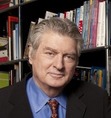Alan M. Siegel's Blog, page 10
November 22, 2023
Becoming Solventum
In SMPL Q+A, we interview our practitioners on all things relevant to branding, design and simplicity. Here, we speak with our experts about our work with Solventum, the new independent health care company 3M plans to spin-off . Learn more about the new brand here.

What made this engagement so unique?
Samantha Starr-Shields: Working with 3M on this project has been very exciting! 3Mers are very passionate and loyal to the brand, so it was important from the start to create a brand that celebrates that passion. We’ve had the opportunity to roll up our sleeves and partner closely with the 3M Health Care marketing team to develop every aspect of this international spin-off brand. From research and brand strategy development to creating the new name and visual identity, so much work has gone into creating this thoughtful brand. This is just the beginning; we can’t wait for the world to see how we’ve collaborated with the 3M team to help bring the Solventum brand to life.

How would you define the new Solventum brand?
Matt Egan: The Solventum brand is about listening and responding: Listening with empathy to the needs of medical providers and responding with unexpected solutions to address their needs and solve big healthcare challenges.
What is the new mission and promise?
M.E.: Solventum is driven by a profound mission: Enabling better, smarter, safer healthcare to improve lives. We found that this mission resonates powerfully with Solventum employees worldwide, and we wanted to make sure it is reflected across the brand experience, especially in employee-focused activations.
Solventum’s promise—we never stop solving for you—speaks to the company’s intense focus on customer needs, and its people’s drive to create game-changing solutions at the intersection of health, material and data science. This promise sits at the heart of Solventum’s external expression and inspired the Solventum name and identity.
What were some of the challenges in creating the new brand?
M.E.: This type of undertaking begins with seemingly thousands of questions: What unique value will the spinoff bring to customers? How can the company distinguish itself in a highly competitive marketplace? How should it be different from legacy 3M?
At the outset, the biggest challenge was to define a plan that balanced the need for rigor and fact-based decision-making with the equally important need to move fast. We succeeded with a strategy that blended quantitative insight, creative intuition and close collaboration with the Solventum team.
NamingTell us about the meaning of the new name.
Lea Chu: The name is about solving healthcare challenges and gaining momentum through that process. “Solving” captures the dedication to finding breakthrough solutions. “Momentum” symbolizes swifter, nimbler innovation. It’s a future-focused, dynamic name that captures the spirit of the mission.

What is the meaning behind the new logo?
Sam Houle: The new logo is inspired by Solventum’s drive to never stop solving. The brand symbol, the “S” monogram, is an expression of being boundless and limitless. The movement and curvature of this symbol reflect Solventum’s responsive, caring, and imaginative nature.
The custom wordmark has been crafted to mimic the geometries of the brand symbol to create a strong visual connection between the two elements. Striking the right balance of credibility and humanity was paramount when crafting this wordmark. This balance was brought into the wordmark through the beautiful contrast of humanistic curves and structured angles.
What inspired the brand color palette?
S.H.: Solventum’s distinctive brand color is green–the color of life, growth and safety. The color palette utilizes a vibrant bright green to capture the imaginative energy when solving complex challenges as well as a richer, deep green to show the brand’s caring, people-first nature. The expanded color palette brings in the colors of healthcare through a beautiful array of teals, clinical white and cool grey tones.
The post Becoming Solventum appeared first on Siegel+Gale.
November 21, 2023
Quicken at 40: new branding that looks to the future while honoring heritage
In SMPL Q+A, we interview our practitioners on all things relevant to branding, design and simplicity. Here, we speak with our experts about our work with Quicken, maker of America’s best-selling personal finance software. For 40 years, more than 20 million customers have relied on Quicken to help them take control of their finances and lead healthier financial lives. (Learn more about the evolution here.)

Why did Quicken engage Siegel+Gale?
Kaitlin Smith: Quicken approached Siegel+Gale to revitalize its brand. With over 20 million customers over the past 40 years, the Quicken brand was highly recognizable, with a strong following of committed customers who depend on Quicken products to manage their financial lives. The Quicken team wanted the visual identity to reflect the current state of the brand and signal future growth, with cloud-based products leading the way. Siegel+Gale had done previous brand refreshes for Quicken over the years, but this new challenge required a more comprehensive reimagining of their brand — an exciting opportunity we were thrilled to be a part of.
StrategyCan you explain the new brand strategy?
K.S.: To achieve their business goals and modernize the brand’s visual identity, the Quicken team first needed a streamlined brand architecture. To create an intuitive, future-facing solution, we leaned into the trust earned over time from the time-tested Quicken brand and the recent equity garnered by their cloud-based Simplifi product brand. The Quicken brand was elevated to be both the company name and lead name across all product offerings.
The fresh blue color from Quicken Simplifi was leveraged to be the primary color for the company-level brand and all future products. For continuity and clarity, an updated version of the legacy red color associated with the original brand was retained for all desktop software products. By combining a nod to the past with a lean into the future, Siegel+Gale provided the desired stability and recognizability for existing customers alongside a fresh new look to pave the future path for the company.
InsightsWhat role did research play in this partnership?
Kristen Berry-Owen: By engaging potential customers from the younger generation as well as loyal customers familiar with Quicken, we were able to pressure-test our design options and understand which delivers the inherent equity to support the future vision of Quicken. Research respondents evaluated design concepts on metrics, such as bold, fresh, modern, simple, smart and fit for the brand and product offerings. Through research, we were able to build consensus around a design choice that delivers the desired brand characteristics to the target audiences.

What was the concept behind the new visual identity? Any inspiration you would like to call out?
Mei Wing Chan: Our brief was to take a digital-first approach to the identity and build on the success of the Quicken Simplifi product, while retaining the trust earned over four decades. As a result, our creative design execution leans into a modern, geometric language for the identity and visual system which translates well on digital platforms. Front of mind was also ensuring that simplicity and ease-of-use for customers was at the heart of the brand experience.
https://www.siegelgale.com/app/uploads/2023/11/SG_Quicken_Logo.mp4How was the new logo developed?
M.W.C.: For the identity, the ‘Q’ from Quicken takes on a circular shape representing a complete and all-compassing form, while the tail of the letter signals motion and forward progress. In addition, the ‘Q’ becomes a graphic element in the visual system, where it places customers at the center to suggest care and trust. This circular shape is echoed elsewhere in the identity system, which can be seen in buttons, radius corners and containers. The color was selected to be unique in the competitive landscape, where its violet tone is a combination of the original Quicken red and the blue from Simplifi.

How is Quicken activating the new brand, and how does it help to signal their future?
K.S.: We admire Quicken’s commitment to bringing existing, loyal customers along this brand refresh journey. From day one, through activation, keeping current customers at the center of the work has helped ensure both clarity and appreciation for their loyalty. Existing customers were introduced to the new brand before it was fully rolled out across marketing, website and product experiences–an excellent demonstration of how much Quicken cares about their customers and thinks of them as a vital part of their community.
With existing customers as the foundation, the refreshed brand now serves as a warm welcome to new customers who can better see themselves in the modern reflection of the company, with the reassurance and stability that only Quicken can credibly own in the ever-changing marketplace of personal finance software.
Updating the visual identity for a 40-year-old brand was an opportunity we had to get right. We wanted to honor Quicken’s past while signaling our exciting future, with web & mobile products leading the way. We also needed a brand architecture that was built with our future growth in mind. Siegel+Gale helped us accomplish both with a very thoughtful approach.”
—Tina Lin, Director, Product Marketing, Brand & Channels, Quicken
The post Quicken at 40: new branding that looks to the future while honoring heritage appeared first on Siegel+Gale.
November 17, 2023
The role of brand in M&A: Healthcare
The post The role of brand in M&A: Healthcare appeared first on Siegel+Gale.
November 14, 2023
Simply Smarter: A brand experience newsletter (October 2023)
Delivering simple experiences has never been more important—and 15,000+ consumers across nine countries agree. To determine the global state of simplicity, we fielded a survey to determine which brands and industries simplify people’s lives.
Now, in its tenth edition, our findings prove that simplicity is not a byproduct of success; instead, it is why brands thrive. For simplicity is the means through which to become a top brand.
So, which brands and industries succeed at simplicity? Explore World’s Simplest Brands Tenth Edition.
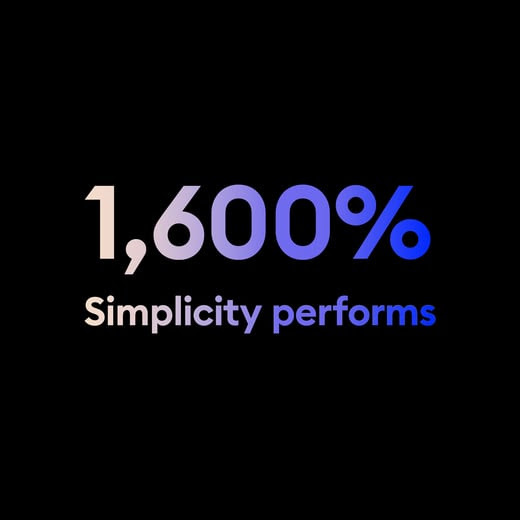
Global Director, Business Analytics & Insights, Brian Rafferty, speaks to Fast Company about why simplicity pays for top-ranking brands like Trader Joe’s, USPS and Lyft.
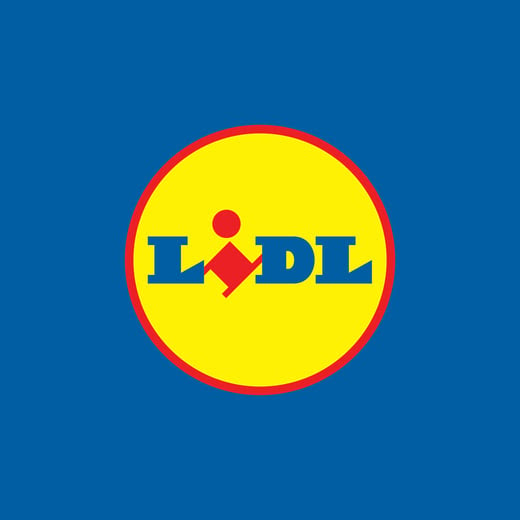
In a new op-ed, Global CMO, Margaret Molloy, explores the Global Top 10 brands and why delivering simplicity to consumers requires intentional business decisions.
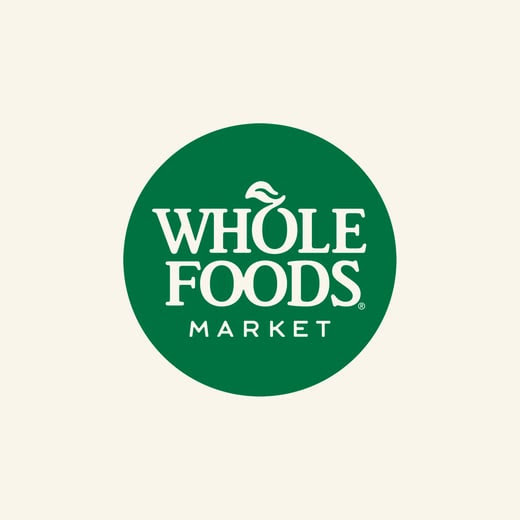
Marketing Brew takes a look at this year’s top performers and why being perceived as simple can be good for a company’s bottom line.

Global Director, Business Analytics & Insights, Brian Rafferty, opines on simplicity’s role in crafting distinct, brand experiences.
The post Simply Smarter: A brand experience newsletter (October 2023) appeared first on Siegel+Gale.
Simply Smarter: A brand experience newsletter (September 2023)
When a company goes public, the focus is on boosting investor confidence—but it takes more than strong financial reports to woo the market. The secret star of the show is brand, and the most successful IPOs are those that spend as much time on brand as on balance sheets. In this month’s newsletter, learn how we’ve helped brands navigate the path to going public.
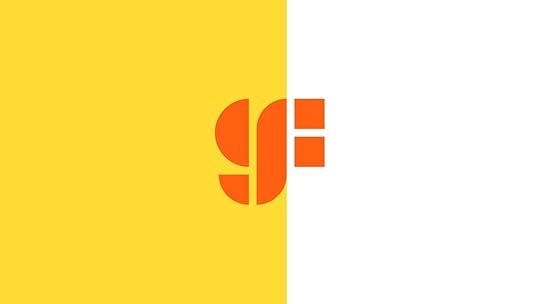 A new era of more
A new era of moreThree months after unveiling their new brand, GlobalFoundries (GF) started trading on the Nasdaq stock exchange. Raising nearly $2.6 billion in their IPO, GF marked the largest semiconductor IPO in history. Learn how we helped rebrand the technology giant.
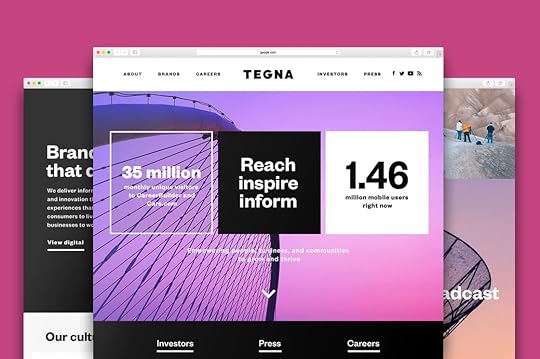 Media that matters
Media that mattersIn 2015, Gannett, one of the largest newspaper publishers in the United States, decided to separate into two publicly traded companies, spinning off its digital and broadcast divisions to simplify and codify its position as a print publisher. Find out how we created TEGNA, a new spinoff brand that carries on the prowess, heritage and quality of the Gannett name while establishing itself as a force in the marketplace.
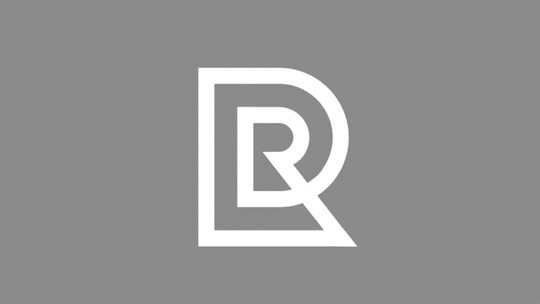 Be commerce confident
Be commerce confidentWhen eBay Enterprise spun off from eBay, eBay Enterprise emerged as an unknown brand holding the name recognition of its predecessor, but with no clear story of their own.
Discover how we helped Radial, the resultant company, extricate itself from a history of spinoff activity that was complicating both identity and brand potential, communicate its renewed commitment to customer satisfaction and differentiate its offering from other existing logistics firms.
 Home sweet (smart) home
Home sweet (smart) homeIn 2018, Honeywell’s home business was opening a new door. Its homes and ADI Global Distribution businesses were spun off into an independent, publicly traded company. With the goal of simplifying the smart home experience and a short turnaround time, we partnered with the Fortune 100 technology company to name the spinoff and shape the new brand’s positioning and identity.
The post Simply Smarter: A brand experience newsletter (September 2023) appeared first on Siegel+Gale.
November 8, 2023
How Lidl became the world’s simplest brand
This article originally appeared in The Drum.
From where they shop to the way they communicate, people put a premium on experiences that are easy to understand, transparent and honest; that care for and meet their needs; and that are innovative, fresh, and useful.
In short, we like to keep things simple.
According to our research, 64% of people are willing to pay more for simpler brand experiences, and 78% of people are more likely to recommend a brand for its simpler experiences and communications. On the other side of the equation, brand complexity costs. In fact, it can result in $780bn of total annual unrealized revenue among global brands.
At Siegel+Gale, we were proud to recently launch our World’s Simplest Brands Tenth Edition (WSBX), where we asked more than 15,000 people across nine countries which brands and industries provide the simplest experience – then we ranked them.

This year German supermarket giant, Lidl, has emerged victorious in taking our coveted global top spot, beating the likes of Aldi and other food retailers (although I know many advocates for ‘Kevin the Carrot’ might disagree with these results).
So why is Lidl the simplest brand?With 12,000 stores worldwide, Lidl has been highlighted by Kantar as the UK’s fastest-growing supermarket and by the Ethical Commerce Society today as the UK’s most trustworthy supermarket. High praise indeed. But what is the linking factor behind its success?
Answer: a series of simple brand-led decisions to ensure the chaos of shopping is seamless, not a chore.
Simple decision #1: Avoid range overloadIn this consumerist society, an abundance of choice is available to us at the drop of a hat. Does this help with our stress levels? Most certainly not. While the luxury of choice is a privilege (and perhaps a desire) for consumers, overloading shelves with duplicate brands leads to confusion.
By keeping ranges simple and using the space in-store sensibly, Lidl helps its customers to shop efficiently and exit with ease, making their lives simpler in the process.
Simple decision #2: Keep prices competitiveAs shopping receipts become an ever-imposing eye-sore, Lidl’s affordable prices provide welcome relief. As mentioned, the avoidance of range overload allows customers to make quicker, more efficient choices, and to save money by reducing impulse purchases.
With Lidl’s emphasis on private label or store brand products, shoppers can save money while still getting bang for their buck – such quality comes from a smart operating model that actively optimizes processes to minimize waste and reduce operational costs. Lidl can keep its prices competitive by integrating simplicity into stores, avoiding elaborate décor and excessive staffing. Instead, Lidl passes these savings on to its customers, prioritizing their needs.
Simple decision #3: Clear and honest communicationHonesty and clarity in brand communication are key. Brands can simplify their messaging by avoiding jargon, keeping promises, and providing straightforward information about products, pricing, and policies. People will find themselves repeating Lidl’s renowned tagline – ‘Big on quality, Lidl on price’ – used ubiquitously across their ads. It’s a promise the brand makes to its customers, and its competitive prices show that the proof is in the strudel.
Get the right words, and it’s incredibly useful. It shows the power of simplicity, conveying an idea in one phrase that positively represents a ‘brand’ in shorthand and enters people’s minds at speed, and due to its incredible economy, stays there for longer, often to positive effect.
This is all supported by the brand’s simple primary colors: red, yellow, and blue. This simplicity has paid dividends, helping the supermarket to increase its market share by two-thirds over the time that it’s had that famous slogan – evidence that simplicity truly does pay.
Simple decision #4: Focus on the customerLidl keeps the customer central to its brand decisions and is inclusive for all. Importantly, the brand does this authentically. From in-store experiences to weekly promotions, everything comes back to care for the customer to ensure a simple, hassle-free shopping experience. Small details like printing its barcodes twice on most of its products make check-out more efficient help those with limited dexterity or deteriorating eyesight.
Furthermore, Lidl delivers on promises and increases customer trust in its brand. By being transparent, straightforward, and consistent in its messaging, the brand builds authenticity. Often, complexity is a mask to hide a true identity. Brands may complicate their language or actions to appear more sophisticated or to obfuscate reality. In contrast, authenticity often involves stripping away these complexities to reveal an unfiltered version.
Simple decision #5: Leverage the customerLidl’s success in becoming the Simplest Brand hinges on its ability to harness the power of its customer base, recognizing that its customers are not just consumers but potential brand advocates. Satisfied customers who have had a positive shopping experience are more likely to recommend Lidl to their friends and family. By fostering a sense of loyalty and trust, the brand therefore turns its customers into genuine ambassadors who promote the brand organically.
Since 2009, the publicly traded simplest brands consistently outperform the average global stock index by 1,600%. While consumer preferences have evolved over time, in the wake of the Covid-19 pandemic, individuals now prioritize brands that deliver simplicity. By offering transparent, honest, and innovative experiences that meet the needs of its diverse customer base, Lidl continues to showcase the power and appeal of simplicity in the modern business landscape.
It’s one to watch.
Philip Davies is President, EMEA
The post How Lidl became the world’s simplest brand appeared first on Siegel+Gale.
October 17, 2023
Employer branding for the energy industry made simple
A compelling story that brings to life why prospective employees should pick you, and not only that but why they should stay: That’s how we define successful employer branding. It sounds simple. So, why do 57% of CEOs struggle to fill company positions in 2023?
Attracting the best of the best
In the post-pandemic era of tight European labor markets and increasing productivity challenges, it’s not news that capturing top talent is a pervasive challenge for certain industries.
Yet when we look at drivers for selecting an employer, particularly amongst future talent, a few natural themes arise from our data: Demands for a high salary, job satisfaction, long-term stability and opportunities to progress. Pretty much the factors you’d expect to see.
Not only this, but a staggering 57% of people profiled believe the energy industry has the power to change the world, neatly aligning with the increasing desire for younger talent to connect their work to their personal values and sense of purpose. This means that the key factors encouraging young talent to join firms are largely synonymous with the offering of the energy industry.
However, a significant number of talented people who might be tempted to join organizations are currently put off by the process of actually getting the job. Subjected to rounds of interviews, testing, vetting and exclusionary approaches. A new study found that 7 in 10 UK job applicants considered or did drop out of the recruitment process because it is too long and complex. In other words, perhaps the issue is less about appealing to top talent. It’s the experience of getting hired that gets in the way of the hiring.
A few alterations would simplify this process considerably.
If your business claims to take DEI seriously (as it likely does), it’s important to consider an inclusive by design approach to hiring. Whilst some candidates thrive in a series of interviews, others will prefer the opportunity to talk through case studies or a portfolio in a less formal setting. Outlining the entire hiring process at the start and informing candidates of the number of stages and tasks reflects a commitment to clear and transparent communication.
Keeping people onboard
What about once people have actually joined? How do businesses ensure that talent at all stages of their career stick around?
When we say “businesses are struggling to retain employees,” we’re actually talking about “businesses are struggling to make employees feel that they belong .” Again, it’s the experience of everyday life at an organization that’s critical to encouraging people to stay.
Since the pandemic, culture in workplaces has suffered hugely. At a time when our collective social skills have waned, burnout, exhaustion and frustration have all exacerbated sagging corporate cultures. People are less extroverted, agreeable and less open than before the pandemic, which can make fostering connections at work a challenge.
Studies show that organizational culture is ten times more meaningful than salary and benefits when employees decide to leave a job. This means that without a strong employee experience, if people do not feel connected to an organization and each other, regardless of whether they are saving the world and earning big bucks – they simply will not want to stick around. Brand is a powerful tool that helps build a strong internal experience and a sense of belonging for employees.
Enhancing the experience
Our study shows that simplicity is key to building connection and fostering loyalty at work. Simple workplaces leverage powerful tools to connect with employees on an ongoing basis.
Not only do they help connect the dots about why the work matters to customers, they inspire pride, make employees feel valued and foster psychological safety. They also use data to find and leverage brand champions within the organization. These people understand what their company stands for, are committed to it and, crucially, will advocate for it.
These workplaces use a foundation of data-driven insights to connect with their employee base and build meaningful experiences that align with their brand to help employees get what they need done in the simplest way possible.
As a result, such workplaces build productivity, drive, engagement and trust: 91% of employees at simple workplaces trust their leadership, compared to 50% at non-simple workplaces. And critically, they retain more people. To put it frankly, people at non-simple companies are more likely to leave their place of work.
Why should we care?
Workplaces built on the foundation of a simple brand and strong employee experience ensure a smoother and crucially stickier employee journey, benefiting the organization as a result.
Three keys we’ll dig into further in our session on October 23rd at the CHARGE Conference to build a powerful employee experience and help simplify your workplace:
Find the fact-baseLead with purposeFoster connection
Emma Lewis is Associate Director, Strategy
The post Employer branding for the energy industry made simple appeared first on Siegel+Gale.
October 12, 2023
Why simplifying might be the best decision you’ll ever make
This article originally appeared in Little Black Book.
The launch of Instagram and Uber. 500M WeChat users. 100M TikTok downloads. 1B wearable-tech users. 1M ChatGPT users. More than half of the U.S. using contactless payments.
These are only some of the many ways the ubiquity of mobile, the proliferation of consumption channels, and the mass adoption of social media have manifested since the advent, in 2010, of Siegel+Gale’s World’s Simplest Brands study, which surveys 15,000+ people across nine countries about the perceived simplicity and complexity of 800+ brands and 25 industries.
Many disruptive brands that have dominated this period of innovation have harnessed simplicity to propel their meteoric rises. Yet, because of abundance—of content, of channels, of products—consumers continue to experience complexity.
And they revealed it to be so. The 2023 World’s Simplest Brands study found that 64% of consumers are willing to pay more for simpler experiences, and 78% of consumers are more likely to recommend a brand because it provides simpler experiences and communications.
The world over, simple experiences have the following characteristics: easy to understand; transparent and honest; caring for and meeting people’s needs; innovative and fresh; and useful.
Globally, the top-performing brands traverse industries and business models. Several of them are veterans of this distinguished arena. For instance, this year’s winner, Lidl, has been in the Top 10 in six editions. And Google has an admirable record: top three in nine editions. Others, 7-Eleven and FamilyMart, are newcomers.
It’s apparent that delivering simplicity to consumers requires intentional business decisions. It’s worth keeping an eye on the brand-experience decisions these ranking rookies and seasoned simplifiers are implementing.

The German discount retailer Lidl is simplifying healthy, sustainable eating for generations to come. Lidl has introduced kid-friendly fruit-and-vegetable packaging to encourage kids to notch up their nutrient intake. They’ve also committed to removing cartoon characters from all “unhealthy” products by spring 2024. But these cuisine commitments won’t be the only root of Lidl’s success. Just as the brand has done for fifty years, Lidl needs to continue to produce high-quality items, low prices, and simple shopping experiences.
2. GoogleMaking their mark in the top three for the ninth consecutive edition, the tech leader Google embodies simplicity. Now, the future of Google search is coming into focus through SGE (Search Generative Experience): the new AI-driven search-engine results page. In this new era of search, Google aspires to continue to provide users with simple experiences by unlocking a world of information faster.
3. AmazonSelling everything from hammocks to HDMI cables to hoverboards, the e-commerce giant Amazon added a new offering: healthcare. Amazon’s acquisition of primary-care practice One Medical aims to simplify the often-fraught experience, aspiring to make it easier to find, choose, afford, and engage with healthcare. Effective, accessible virtual care services, on-site labs, and an array of healthy-living programs promote physical and mental health. Amazon might write the prescription for painfully complex healthcare experiences.
4. AldiWith 90% of their products private label, the German grocer ALDI simplifies the shopping experience by limiting the paradox of choice. Don’t spend hours debating which tomato sauce to buy. Instead, trust that ALDI will deliver high quality and low prices so you can just grab a can and go. And this fall, look out for their seasonal maple-, pumpkin- and cinnamon-stocked shelves in one of the 120 new ALDI stores opening in 2023. To reinforce the brand’s sustainability commitment, new stores will be equipped with eco-friendly features, including adding solar panels and eliminating plastic shopping bags.
5. SamsungSamsung continues to take its place at the frontline of innovation with an eye to simplicity. Take the Galaxy Z Fold 5 and Flip 5. By urging consumers to defy norms and enjoy new experiences on the “flip side,” this electronics corporation challenges everything people know about ordinary smartphones. Even as the mobile phone market declines, the foldable phone sector continues to grow—and other tech companies are beginning to follow suit. The future might be foldable; it’s as simple as that.
6. 7-ElevenThe convenience-store chain 7-Eleven keeps simplicity well stocked. Supplying everything from snacks to magazines to gas, the smorgasbord store simplifies any experience. By cancelling any complexity, 7-Eleven isolates brain freeze to their iconic icy treat: the Slurpee. 7-Eleven has added new foods, including a Korean BBQ taquito—which might satisfy the need for simple, cross-cultural experiences.
7. McDonald’sThe fast-food chain McDonald’s famous golden arches are going green, thanks to a goal to have 100% of products in recycled or renewable materials by 2025. For consumers and employees alike, easy-to-understand initiatives like this simplify McDonald’s sustainability mission. And simplicity spans packaging to patties. Rather than super sizing their menu options, McDonald’s has upgraded classics with softer buns, gooier cheese, and richer condiments.
8. UNIQLOEnhancing user experience is woven into the fabric of UNIQLO. In response to consumer feedback, the Japanese retailer crafted UV-protection clothes and anti-fog sunglasses. These tailor-made tweaks model their mission to deliver clothing that enriches the lives of all consumers around the world. And UNIQLO is known for collaborations with designers. This fall, UNIQLO debuted aesthetic alliances with French designer Ines de le Fressange, as well as tennis legend Roger Federer by way of U.K. fashion label JW Anderson—as if doubles partners! By making high-end designs accessible, UNIQLO is banking on sartorial simplicity always being on trend.
9. FamilyMartAs a one-stop shop for all necessities, the Japanese convenience-store chain FamilyMart keeps life simple. And their enhanced fashion products set them apart from a typical corner store. With new apparel items geared towards all ages, like unisex shorts and sandals, the FamilyMart brand has got you covered—from head to toe. The combination of universal designs and convenience might be one blueprint for simplicity.
10. Burger KingBurger King takes their seat on the throne, providing royally tasty and conveniently simple consumer experiences. Offering over 200,000 ways to uniquely customize their signature Whopper—whether it’s through pickles for crunch, jalapeños for spice, or barbecue sauce for tang—Burger King adds personal flair to their fast-food franchise. And with their two-year commitment to investing in restaurant tech, this type of customization is simple and satisfies those salty cravings.
Complexity is compounding in every sector. There will be more content, more channels, more products—in short, more decisions. But decisions won’t be limited to consumers; rather, brands will have to make decisions too.
Brands have the choice to allocate their dollars to fund everything from business acquisitions to marketing programs to product innovations. The top-performing brands apply a lens of simplicity to help prioritize where to invest. They embody a simplicity mindset and operationalize successfully and at an admirable scale.
The brands in the Global Top 10 show that simplicity isn’t destiny or a part of DNA; rather, simplicity is the product of a series of decisions. And, when brands decide to be simple, they are rewarded handsomely by consumers the world over.
Margaret Molloy is Global Chief Marketing Officer
The post Why simplifying might be the best decision you’ll ever make appeared first on Siegel+Gale.
October 11, 2023
Delivering simple experiences has never been more important
This article originally appeared in ANA.
For brand builders, the world has never been more complex. And more than 15,000 consumers agree.
Now in its tenth edition, World’s Simplest Brands — Siegel+Gale’s hallmark study — asks thousands of consumers in nine countries to rank 800+ brands and 25 industries according to how simple or complex they are.
Since its launch in 2010, the study has consistently determined the global state of simplicity. This latest edition proves that, now more than ever, how brands rank depends on the experiences they deliver. And delivering simple experiences — those characterized as easy to understand, transparent and honest, caring for and meeting consumer needs, innovative and fresh, and useful — is rewarded the world over.
Lidl led the global rankings, followed by Google and Amazon to round out the top three. In the ten editions of World’s Simplest Brands, consumers have rewarded these three brands, in particular. Lidl has been in the Global Top 10 in six editions. Google has been in the top three in nine editions. And Amazon has been in the Global Top 10 in seven editions.
All the top-performing brands are beacons of simplicity, proving that simplicity is not one-size-fits-all, considering they have excelled at crafting distinct, brand experiences in their respective industries.
Consumers reward simplicityYear after year, the findings in World’s Simplest Brands show that simplicity drives business growth. Since 2009, a portfolio comprised of the publicly traded world’s simplest brands has beaten the average global stock index by 1,600%. And two factors that impact simplicity’s growth performance are how it builds loyalty and earns a premium: 78% of consumers are more likely to recommend a brand because it provides simpler experiences and communications, and 64% of consumers are willing to pay more for simpler experiences. Just as simplicity strengthens brands, complexity costs them. When brands fail to simplify, they leave an estimated $780 billion on the table.
U.S. movers + shakersIn this year’s U.S. Top 10 ranking, the brand performances reflected the global trend of increased simplicity in the Retail/Grocery, Restaurants, and Shipping/Mail industries.
Whole Foods Market topped the ranking, rising 17 spots from the study’s previous edition. People remarked on how the grocery giant makes it simple to make healthy choices. Take the brand’s analysis of the upcoming year’s food trends. The trend report demystifies and simplifies sustainable eating. Trader Joe’s had a 28-spot rise to place seventh. The grocer is home to private-label products, which save consumers money, simplify the shopping experience, and act as a powerful marketing maneuver, given that devoted shoppers give these items cult-like status.
Another value brand that excelled was Old Navy. The clothing-and-accessories retailer had a 51-spot rise. With smaller budgets and the back-to-basics fashion trend, Old Navy is a simple, reliable, and affordable source of everyday apparel.
United States Postal Service (USPS) had a 49-spot rise to place second. With hundreds of thousands of employees who, given USPS’ ubiquity, act as connectors to the world, the high ranking illustrates the power of human touchpoints in a consumer’s brand journey. Plus, postal workers’ status as essential workers has extended into the post-pandemic world, enhancing good feeling towards the brand. And USPS’ “Delivering for America” plan, which prioritizes streamlining shipping offerings, simplifies the consumer experience.
An unsurprising fall was that of X (Twitter). No thanks to Elon Musk’s takeover, the social media company placed last in the U.S. And, globally, social media as an industry sank seven spots, placing 21st out of 25 industries. Through the years, we have always seen a strong correlation between trust and simplicity; social media’s perceived lack of simplicity is another telling sign that people don’t feel they can trust the content they find.
What’s a brand to do?
Delivering simple experiences satisfies consumer demand, as well as drives growth and stock performance. Here is a checklist for simplifying. Assess where you are on the continuum of these pillars and implement intentional programs to improve in every area, moving further along on a path to set up your brand for success.
Is senior leadership committed to providing simple customer experiences?Does our brand stand for a simple yet compelling idea in people’s minds?Are our products and services clear and easy to navigate?Do we know the brand experiences where simplicity is most needed and can inspire greater brand loyalty?Do we have the tools in place to get everyone to consistently deliver our brand’s purpose?
Brian Rafferty is Global Director, Business Analytics & Insights
The post Delivering simple experiences has never been more important appeared first on Siegel+Gale.
October 5, 2023
Grocery giants Lidl and Whole Foods Market are two of the world’s simplest brands
NEW YORK–October 10, 2023 – Siegel+Gale, the global brand experience firm—known as The Simplicity Company—has today announced its World’s Simplest Brands Tenth Edition (WSBX). WSBX ranks the leading brands on simplicity, asking more than 15,000 people across nine countries which brands and industries provide the simplest experiences. According to the research, 64% of people are willing to pay more for simpler brand experiences, and 78% of people are more likely to recommend a brand for its simpler experiences and communications.
Brand complexity results in $780 billion of total annual unrealized revenue among the global brands surveyed. Additionally, since 2009, the publicly traded simplest brands consistently outperform the average global stock index by 1,600%.
From where they shop to how they communicate, people put a premium on experiences that are easy to understand; transparent and honest; caring for and meeting their needs; innovative and fresh; and useful. In short, simple.
“The world has never been more complex, and for consumers, the number of brand interactions has skyrocketed. While brand experiences happen at every touchpoint across a consumer’s journey, they’re not all created equal. After measuring the value of simplicity across ten editions of World’s Simplest Brands, one finding is abundantly clear: When you understand and simplify your most important experiences, it pays,” said David Srere, co-CEO and Chief Strategy Officer, Siegel+Gale.
“People today are prioritizing brands that deliver on the promise of simplicity, and they are willing to pay a premium for it,” said Howard Belk, co-CEO and Chief Creative Officer, Siegel+Gale. “From finance to technology to groceries, the findings in World’s Simplest Brands Tenth Edition reveal that simplicity is not a byproduct of success – it’s the reason why brands thrive.”

Additional key learnings:
Consumers perceive brands’ DEI and ESG communications as complex: Understanding maxes out at 37% and 42%, respectively.Industry scores signal continued desire to shake isolation: Restaurant, hotel and travel booking industries had significant increases globallyPost-COVID streaming takes a hit: Several streaming/video-on-demand brands (e.g., Netflix, Disney+, Hulu) have fallen in rankings, given new account sharing restrictions for users and increasing provider options.X (Twitter) is most complex: Social media brands have fallen in rankings both globally and domestically, and X (Twitter) now ranks as the most complex brand in the U.S.Regarding additional unique offerings in WSBX, Brian Rafferty, Global Director of Analytics + Insights, Siegel+Gale, said, “Throughout our studies over the years, we have always seen some industries rated as simpler than others, like internet search. But with a deeper dive into consumer journeys for World’s Simplest Brands Tenth Edition, we have found opportunities to simplify the consumer experience in every industry to drive business success.”
To browse the full rankings by country and industry, visit worldssimplestbrands.com
###
About World’s Simplest Brands
To determine the global state of simplicity, Siegel+Gale fielded a survey with more than 15,000 respondents in nine countries to gather perspectives on simplicity and how industries and brands make people’s lives simpler or more complex. Globally, 25 industries and more than 800 brands were rated on their perceived simplicity. The brands were selected as a representative set that respondents would be most likely to know and/or use in each country.
About Siegel+Gale
Siegel+Gale is a global brand experience firm. With unlimited imagination and a dedication to the facts, the firm builds brands that cut through the clutter—and unlock success for their clients. Since 1969, Siegel+Gale has championed simplicity for leading corporations, nonprofits and government organizations worldwide. A part of Omnicom Group Inc., they have offices in New York, Los Angeles, San Francisco, London, Dubai, Shanghai and Tokyo.
About Omnicom
Omnicom (NYSE: OMC) ( www.omnicomgroup.com ) is a leading global marketing and corporate communications company. Omnicom’s branded networks and numerous specialty firms provide advertising, strategic media planning and buying, digital and interactive marketing, direct and promotional marketing, public relations and other specialty communications services to over 5,000 clients in more than 70 countries.
###
Contact:
Daniel Alonso, Senior Content Marketing Manager, Siegel+Gale
dalonso@siegelgale.com
Madeline King, Senior Marketing Manager, Siegel+Gale
madeline.king@siegelgale.com
The post Grocery giants Lidl and Whole Foods Market are two of the world’s simplest brands appeared first on Siegel+Gale.
Alan M. Siegel's Blog
- Alan M. Siegel's profile
- 4 followers


